So far through this explorative journey of the production team for the upcoming Cinderella: The Broadway Musical at the Renaissance, we have taken a look at costuming, lighting, and sound. One recurring theme is that without those components, the production (most productions) would be barren and lackluster. There are artistic works in which the striping down of the stage is necessary. For example, in the classical music world, we have John Cage's 4'33" in which the performer does not play their instrument and the environmental sounds (a truck driving by, movement in the seats, or your own heartbeat) become the art. In the original 1938 production of Our Town, the actors performed on a mostly bare stage. These instances are artistically purposeful, and in Cinderella, the artistic purpose is quite the opposite. Cinderella is full of magic and spectacle, and on the stage, Abram (Abe) Swanger and Jason Kaufman are outdoing themselves to create a lavish experience.


Q: Jason, you are the set designer and Abe, the production manager. Tell me how your roles are similar and how they are different. Once a production is selected, where is the starting point for you? How soon do you dive into creation?
Jason: We both work on building sets. As Set Designer I am more involved in the creative development of the set and set pieces, but I do rely heavily on Abe's input and his ability to problem-solve. One of the big differences is that once the show hits the stage, I transition into my other duties as facilities manager, and Abe steps into his role as production manager, corralling actors and making sure everyone hits their mark during the actual performances.
Q: Budgets - especially now with theatres having to be very careful how they spend their money, how do you create what you want on so little?
Jason: When we strike a show, we save all of the lumber that was used to build the set and recycle that lumber in future set builds. This enables us to save a great amount of money. I would say we only have to buy 10-15% of our lumber new for each show. This allows us to focus our spending on those artistic projects that people have come to expect in a Renaissance production.


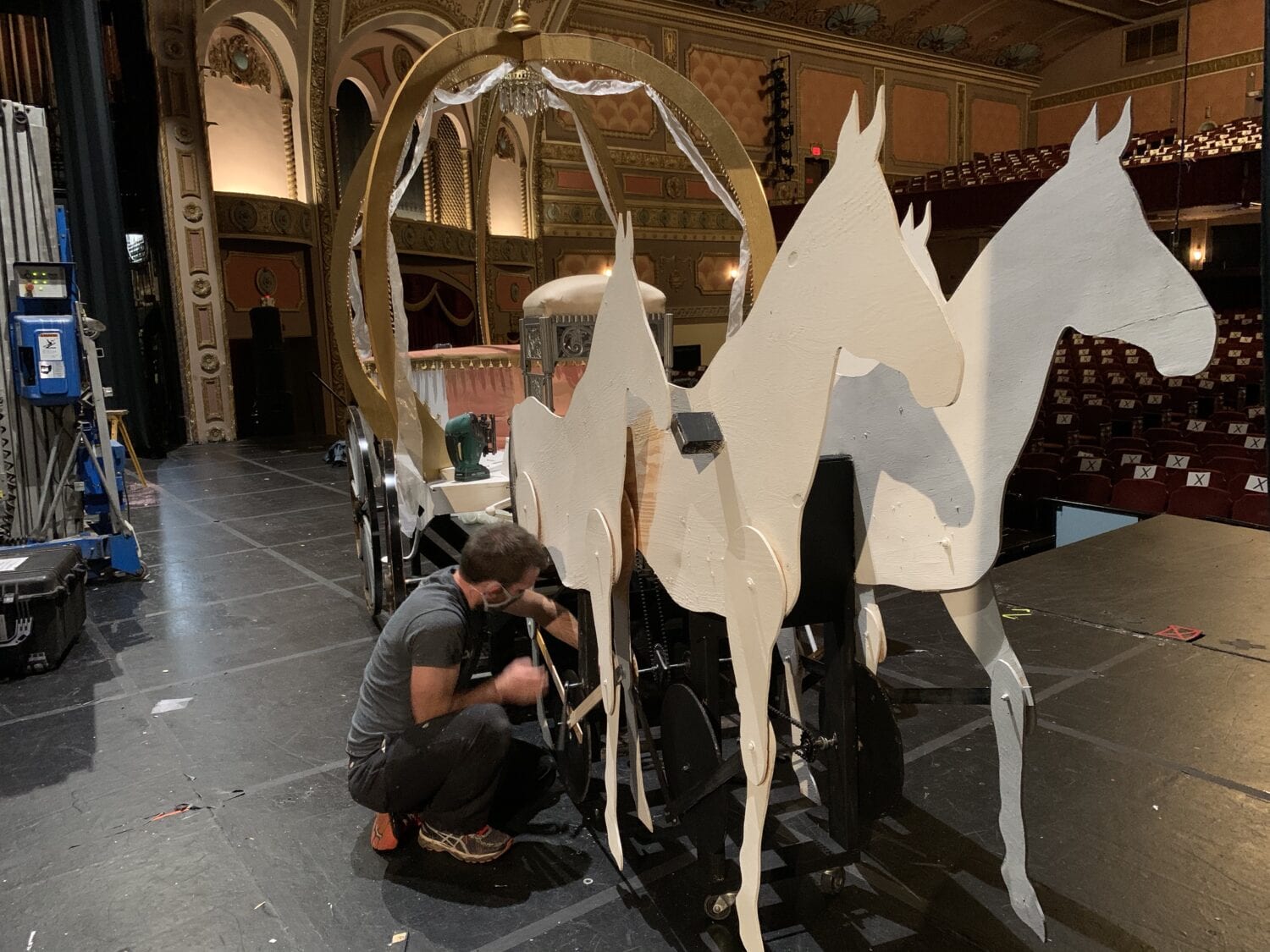
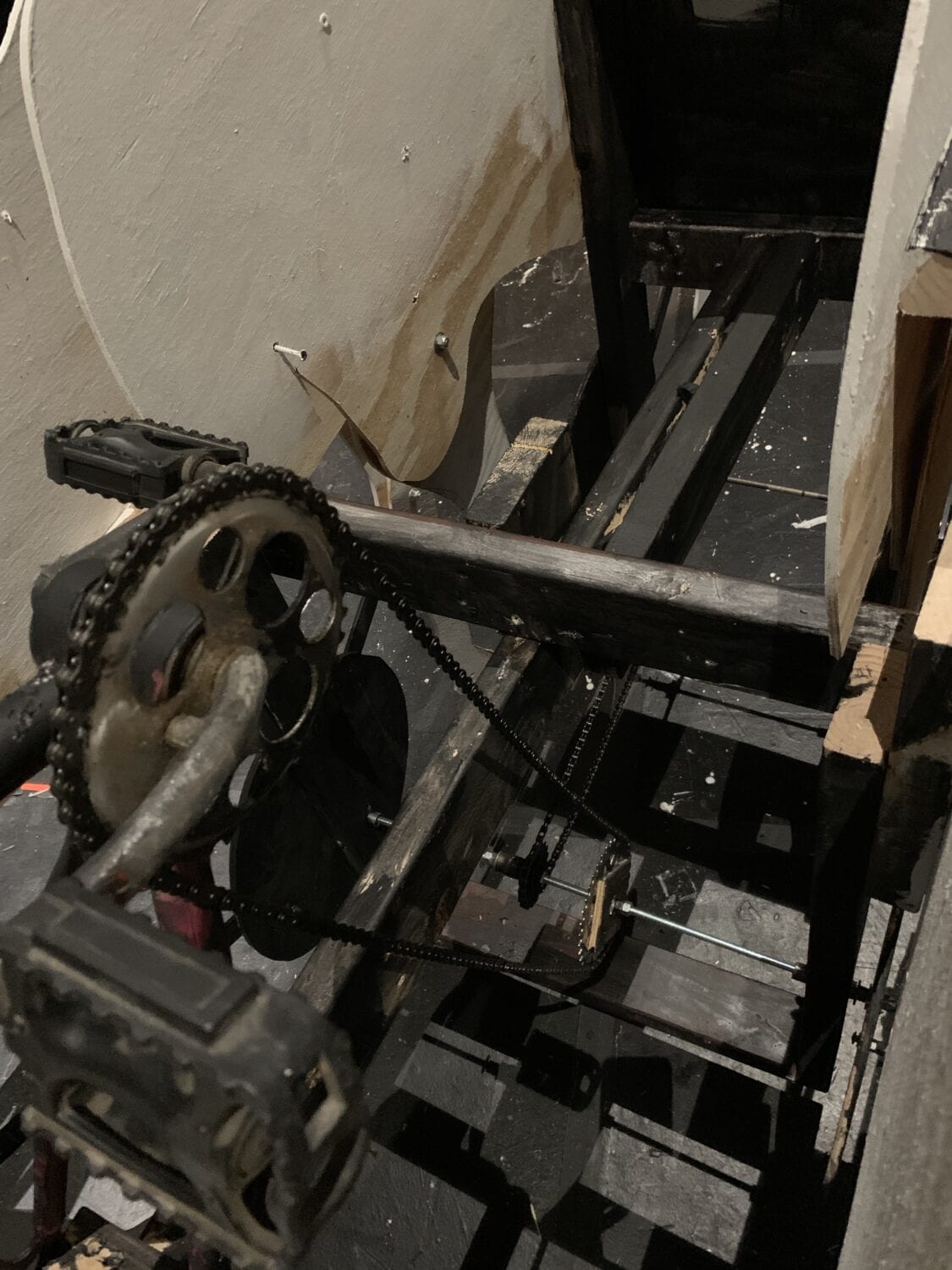
Q: I have heard a lot about the mechanical horses and carriage. Tell me about this prop. Inspiration? How were they created? How many hours spent making them? Is there anything that worries you about them during the show?
Jason: I took a cue from mechanical toy horses that use simple gearing to make the horses appear to gallop. Rather than using a motor to turn the gears that move the legs, Abe and I worked out a pedal-driven system using scrapped bicycles. The "driver" of the carriage pedals the assembly, bringing the horses to life.

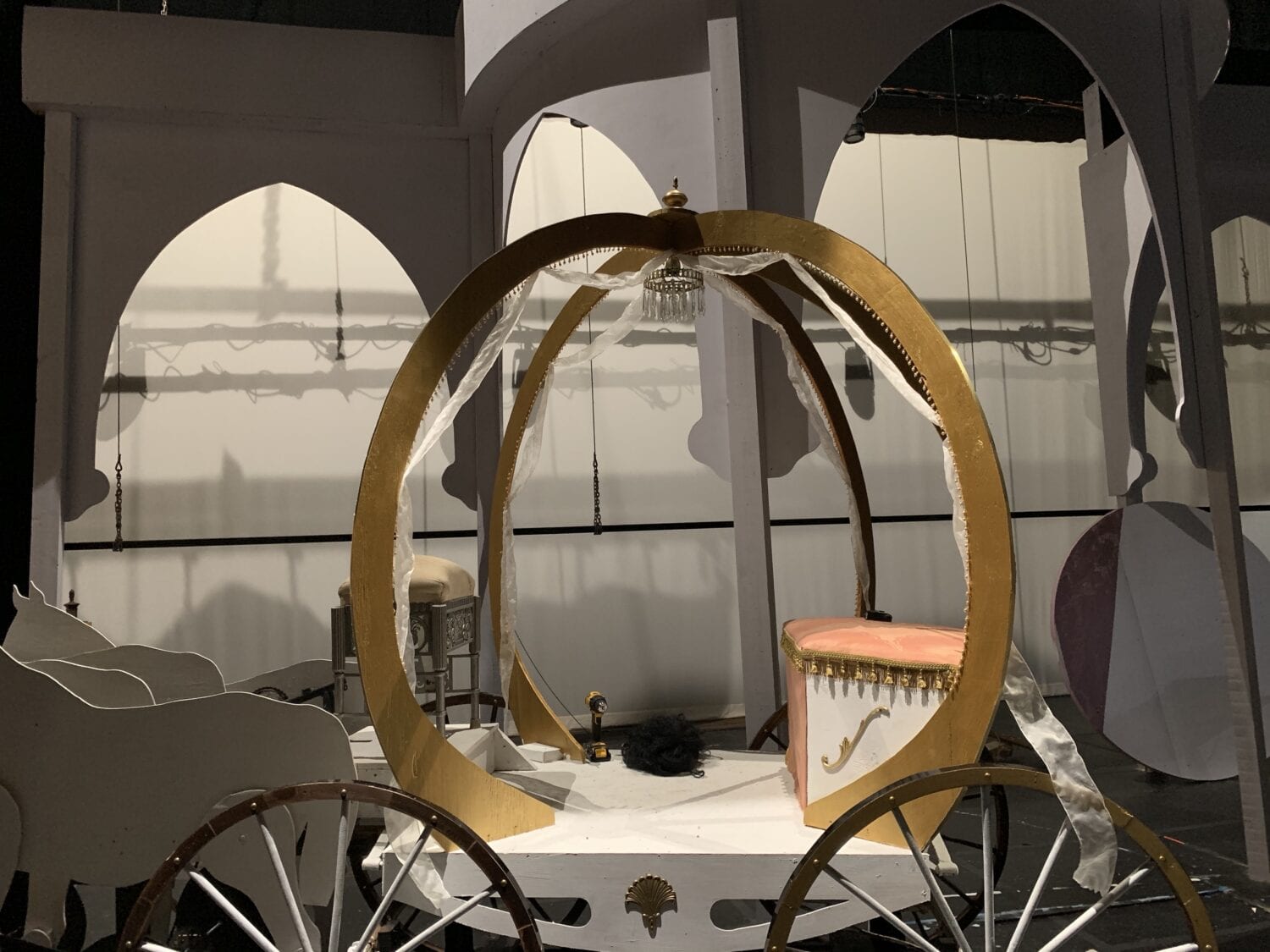
Abe: As far as hours spent making it, I’d say Jason and I spent around 160 hours together designing, constructing, and painting them. The only part that worries us is one of the bike chains coming off track, but we’ve tightened them and taken precautions to make sure that doesn’t happen!
Q: Since projections and lighting are in development while you are creating the physical props, but are integral in what the end product on stage will look like, how are you approaching this in creating the set for Cinderella? Do you anticipate that during tech week you will have to make adjustments to your designs?
Abe: Along the lines of projections and lighting for the show, Jason and I keep in constant contact with the rest of the tech team to make sure everything is how we planned. We consistently double-check locations, looks, and needs for set pieces that get projected on and may have specific lighting needs. We communicate effectively in the hopes that we cover all of our bases so when we get to tech week we can avoid any problems and cumbersome adjustments.
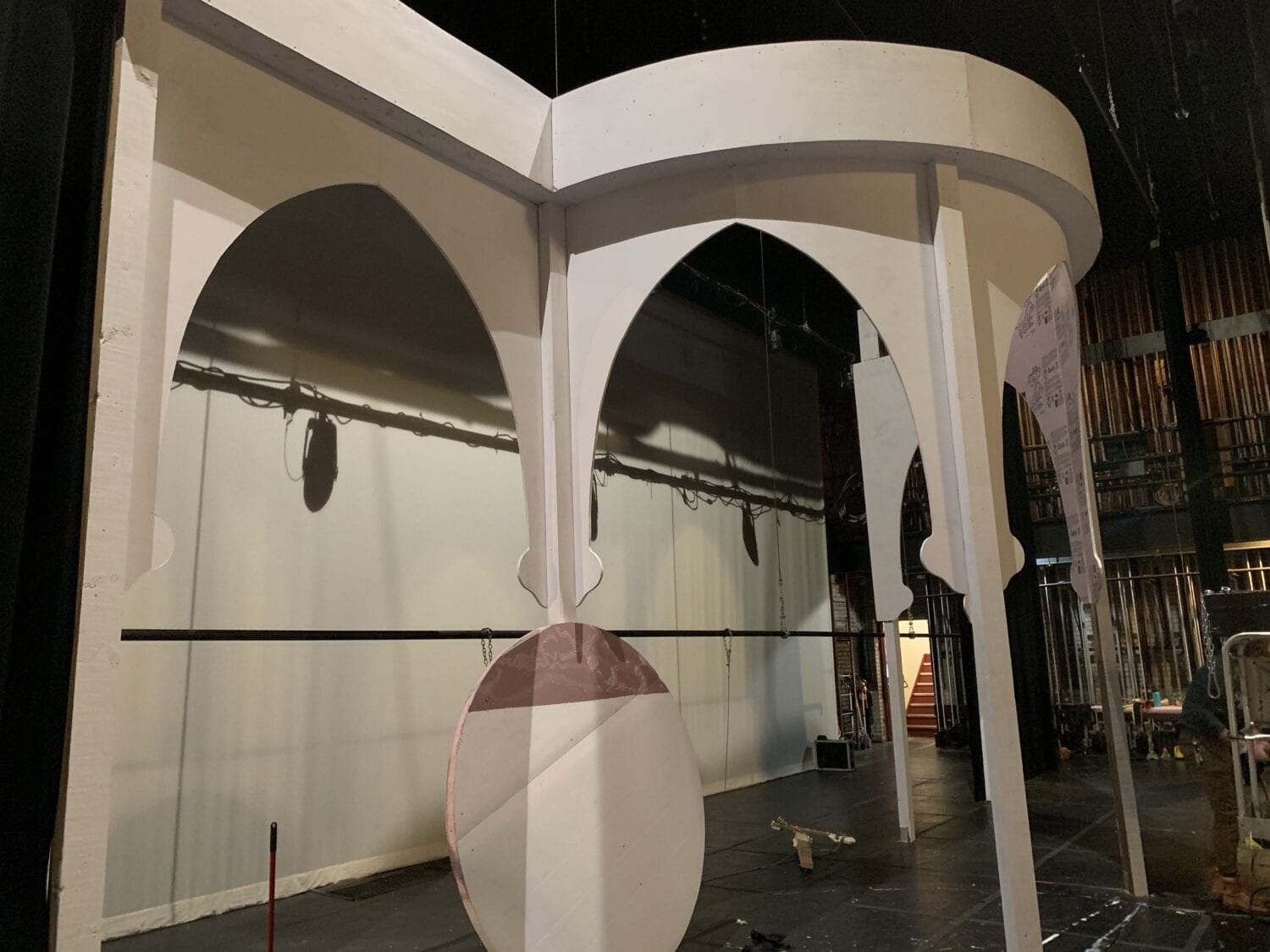
Q: Jason - do you have any sketches for the designs? How has the end product morphed from what you initially envisioned?
Jason: We do not typically diverge from the original design, so far as the bones of the set structures are concerned. It's important that Michael, our Artistic Director, can anticipate the dimensions of the set, because he usually begins staging and choreographing the show before the set exists. That said, we are constantly adjusting and dialing in the details, colors, and surface treatments until we are satisfied.

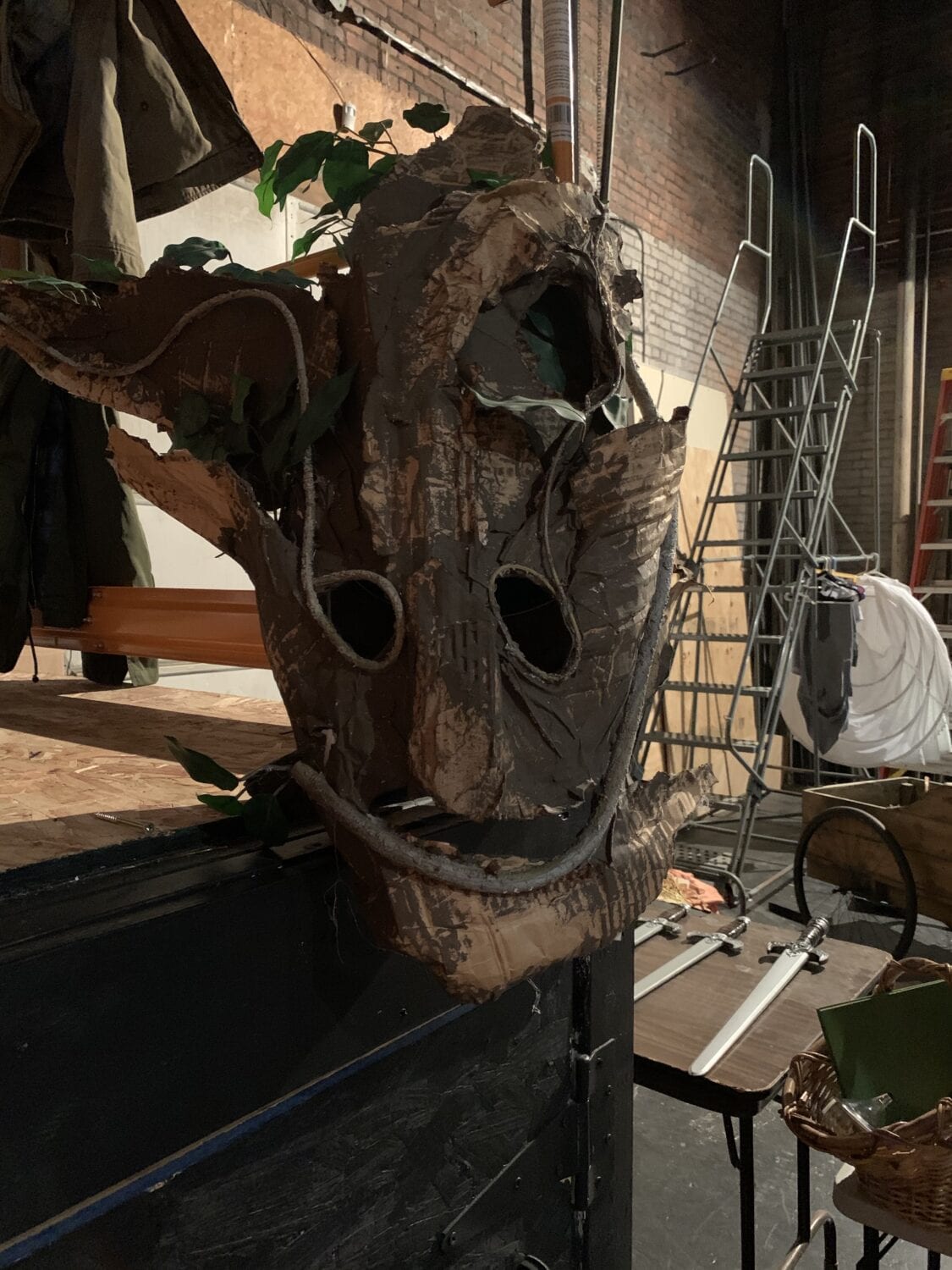
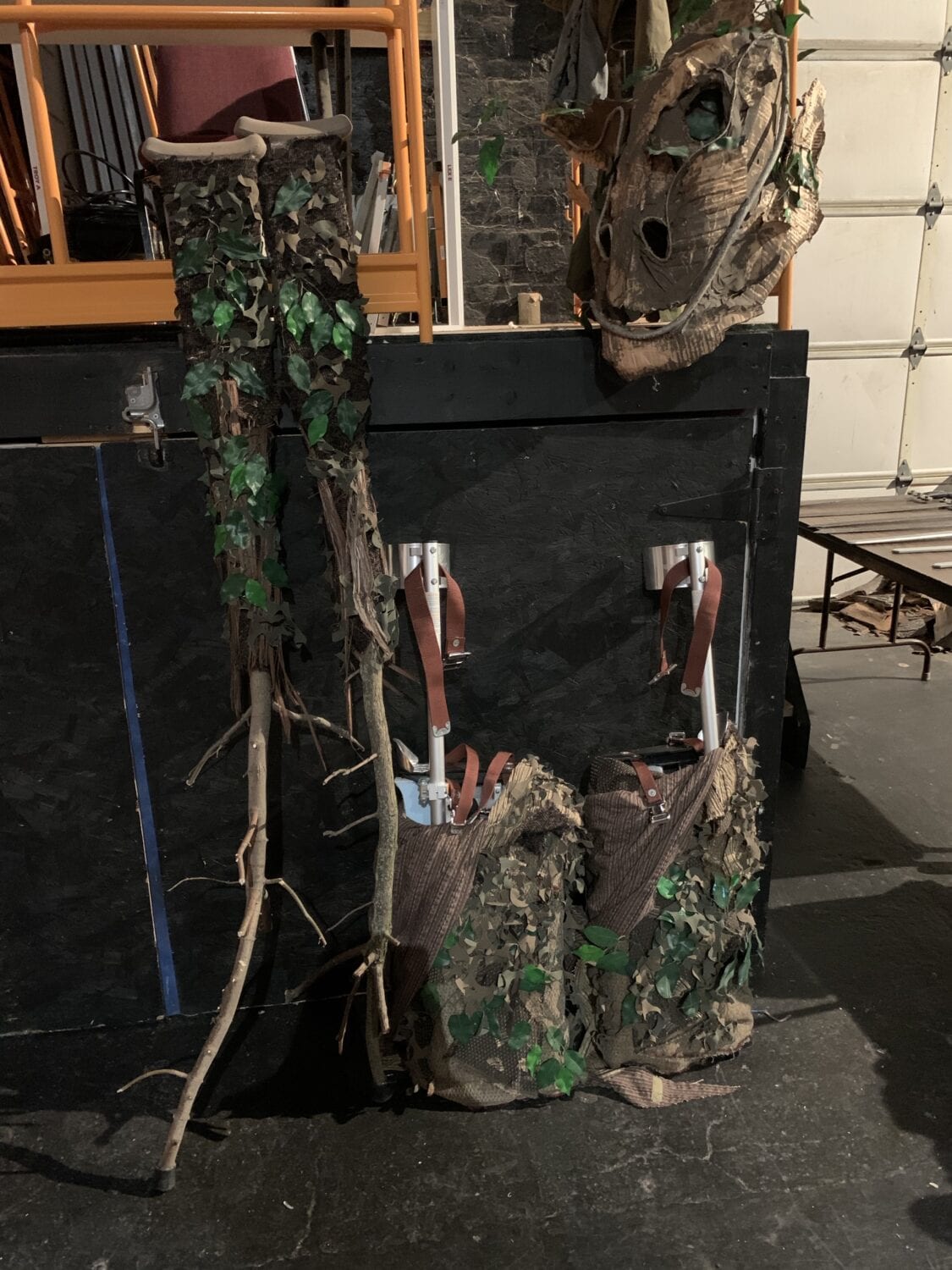
Q: Abe - your job isn't just in prep, but in the very important duty of managing the stage during performances. Tell me about this process. For Cinderella, there are many transformations that happen in split seconds. How do you prepare for these?
Abe: The stage management process involves a lot of forethought, communication, and problem-solving. It takes a lot of time and discussion with our director to determine where, and when set pieces will come on and off stage. Once the where and when have been decided, I get the opportunity to instruct our tech volunteers and students on moving set pieces for the show. Thankfully, we get an entire Tech Week dedicated to learning the show and teaching cues, so by showtime, everything is running as well as it can be. Along with all of the moving pieces of the shows, there’s a lot of managing actors backstage. Making sure they are where they need to be when we need them, and following proper procedures to make the show runs as smoothly and safely as possible.
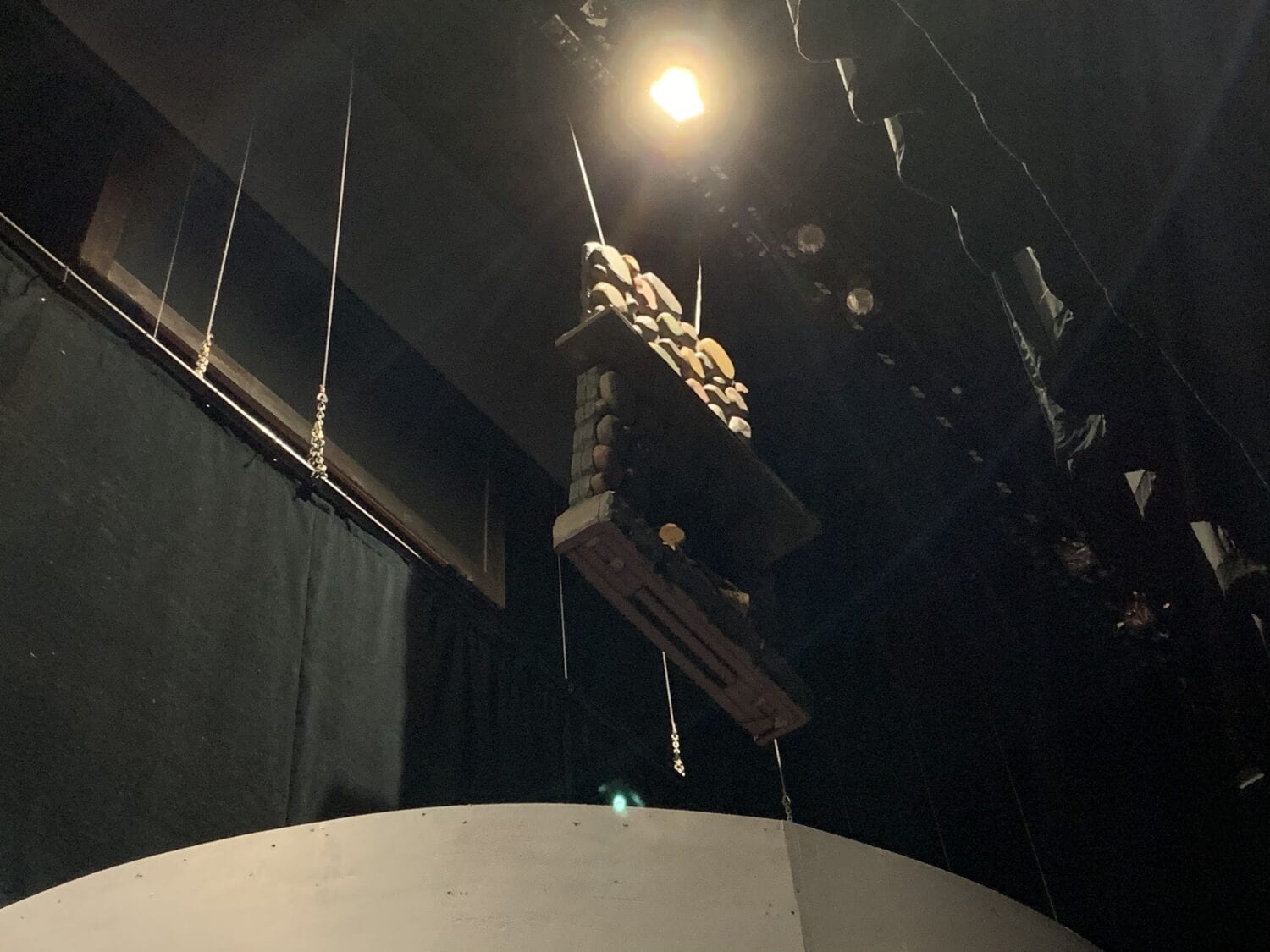
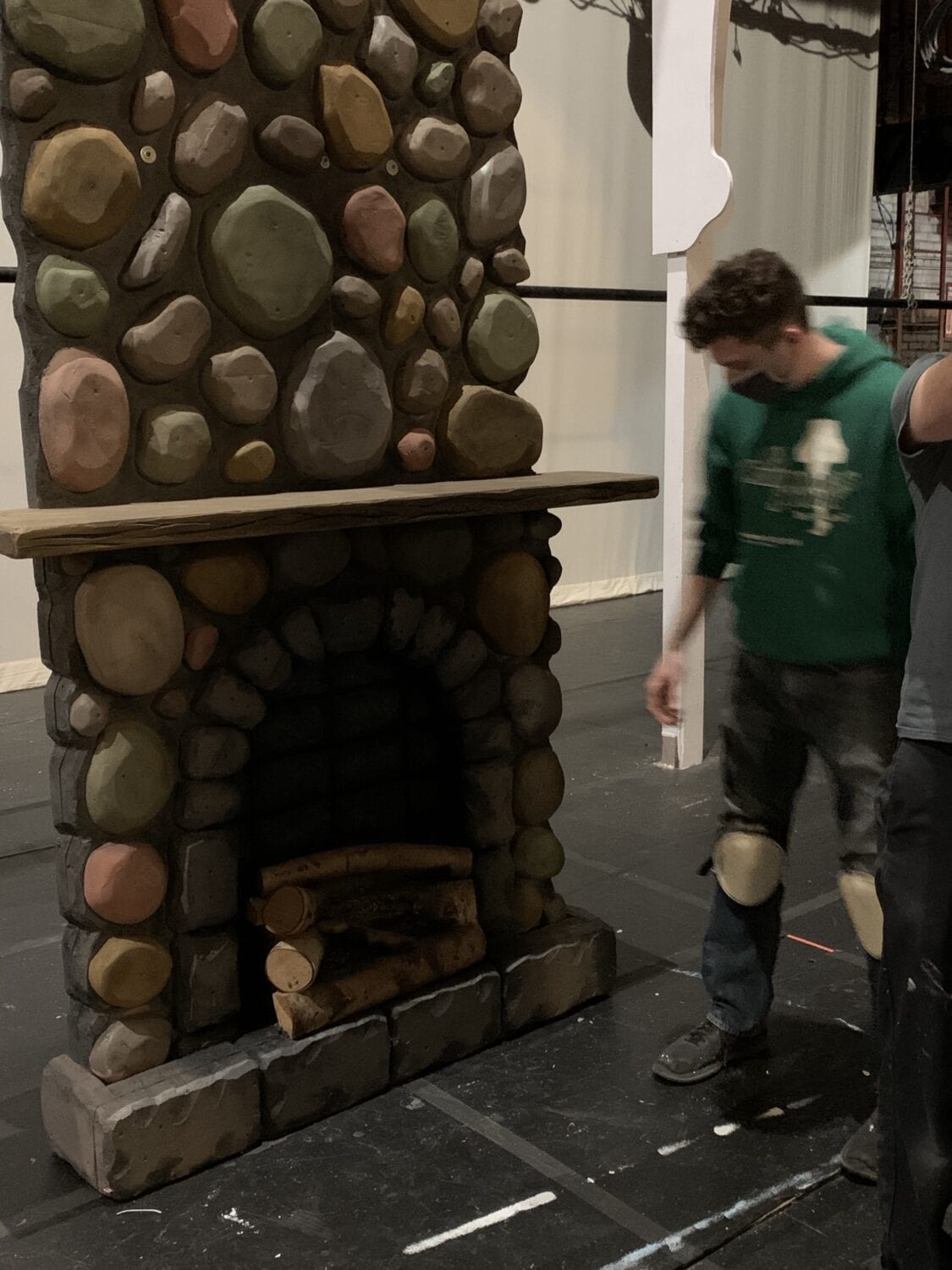
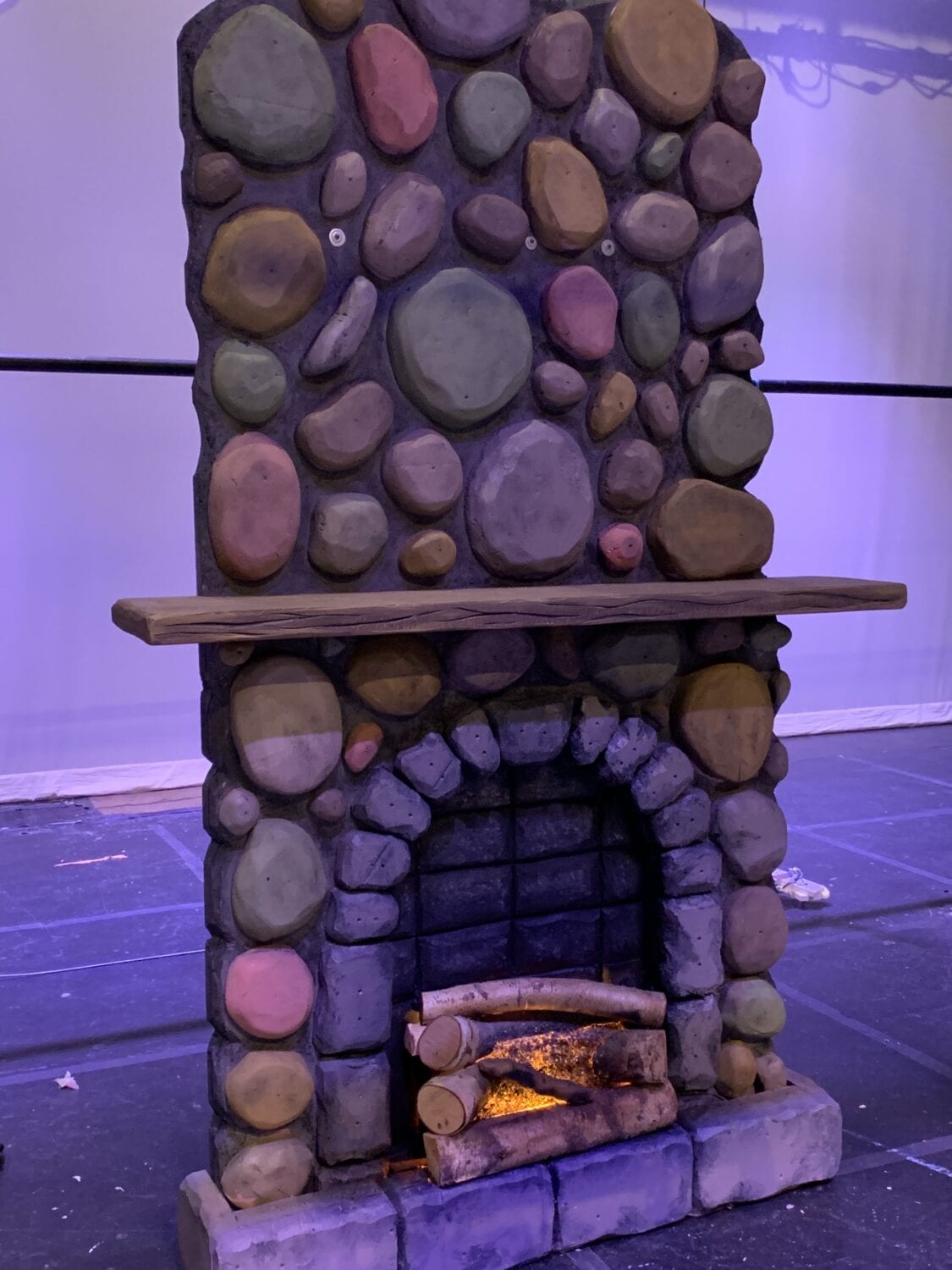
Q: Are you preparing already for the productions coming in 2021?
Jason: No way!
Abe: Unfortunately, there isn’t enough time in the day to prepare for shows that are months away.
Q: If someone asked you why going into your fields at a performing arts organization is worthwhile and fulfilling, what would you say?
Jason: Last week we were engineering the gear system for the carriage horses. This week I've been painting the horses to look realistic. The continually changing nature of the work and the challenging nature of the work is very exciting. With a background in fine art painting and sculpture, I can be preoccupied with the details of a work, but working in theater has taught me to approach art differently. Abe and I are pumping out 12 shows a year, some more involved than others, so I've had to learn to make creative choices with confidence, to work quickly and on a large scale. This all feeds back into my personal artwork.

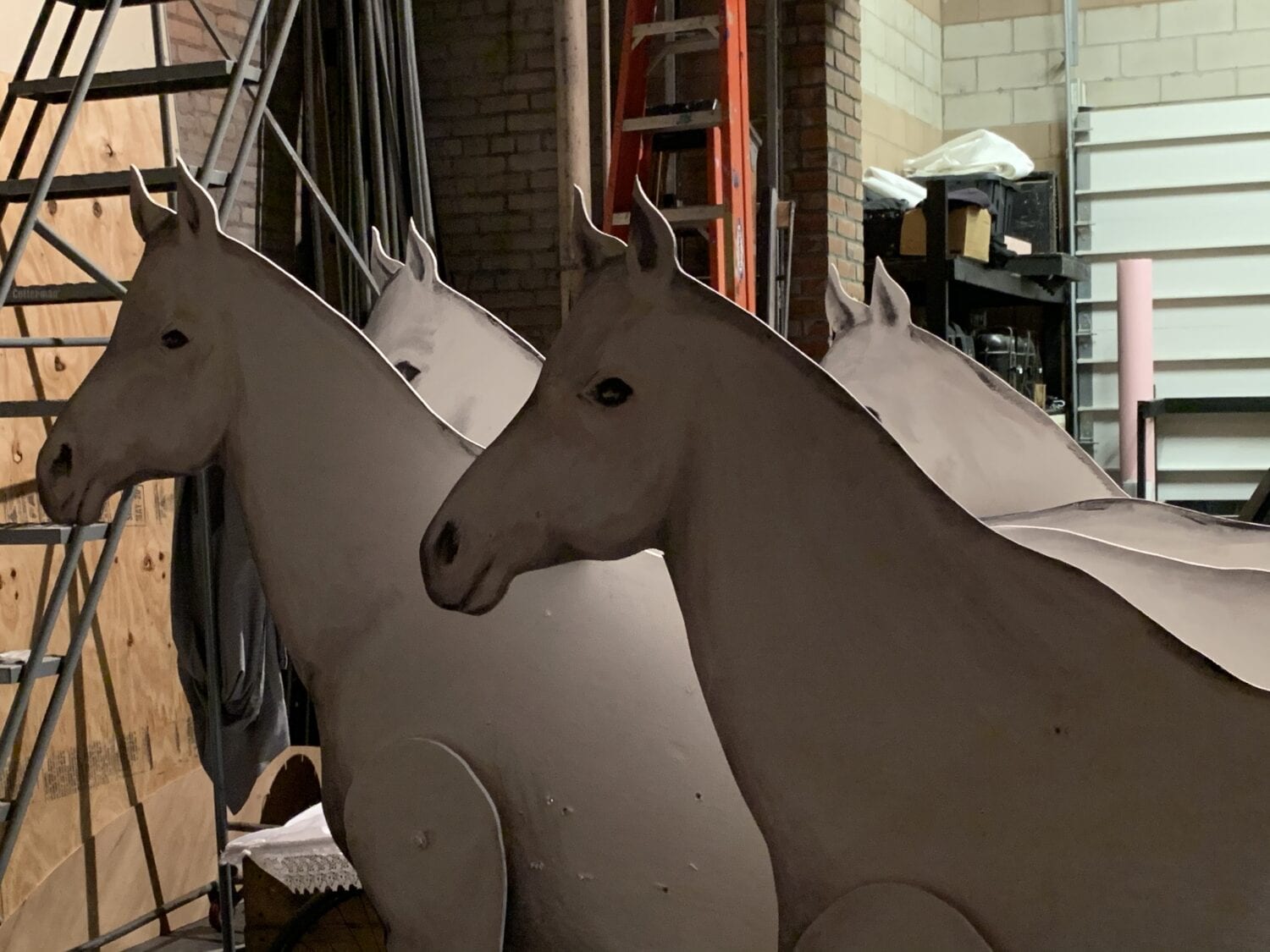
Abe: For me, it’s incredibly fulfilling to work on a production from the ground up. Problem-solving and creating through the entire process, and getting to do it with an incredibly talented production team and an astounding group of actors make it all worthwhile. It’s a lovely opportunity to share something our team is passionate about with the audiences that fill our seats each show night.
To see all of these pieces come together, don't miss Cinderella: The Broadway Musical, Nov. 13-15, 20-22, and Dec. 5. You can also see it at-home with our new streaming option! You will be glad you did!